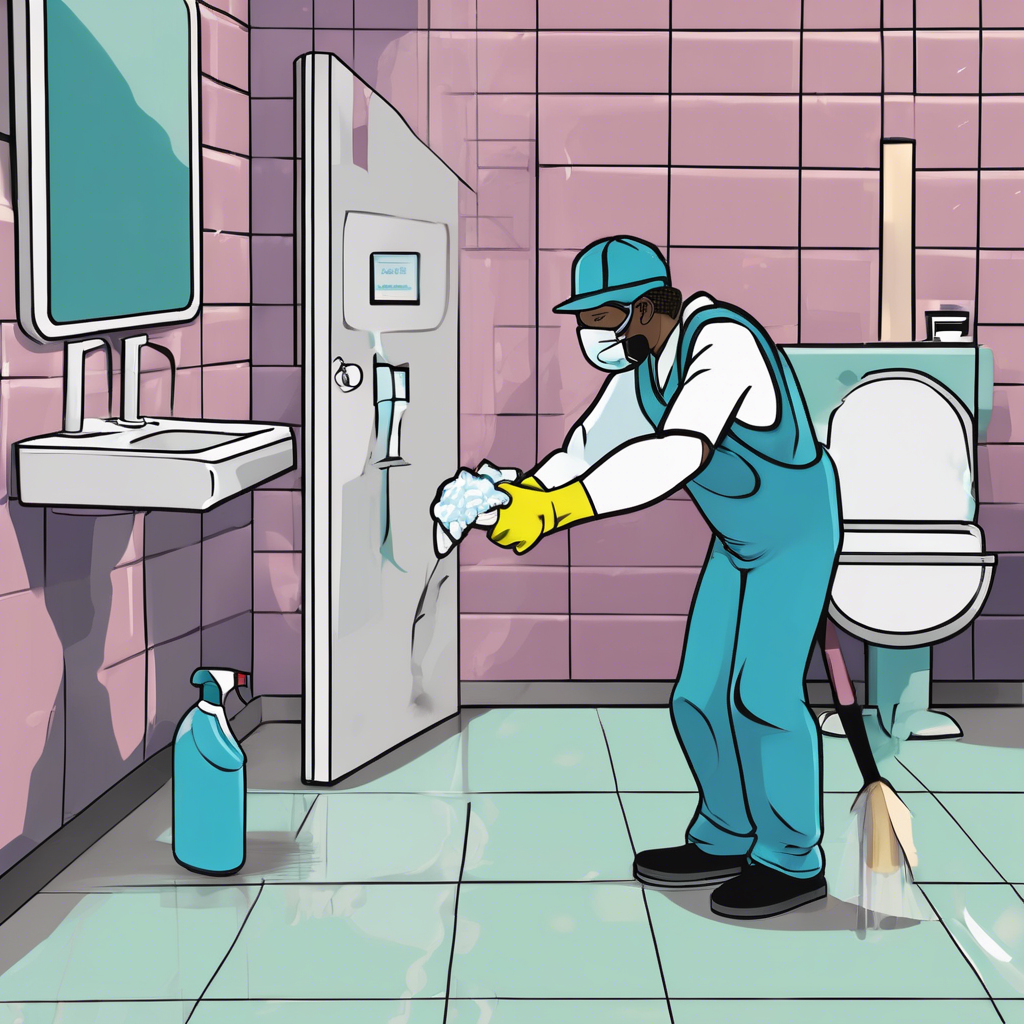The Surprisingly Sophisticated Art of Public Restroom Sanitation
Let’s face it: public restrooms. The very phrase conjures images that range from mildly unsettling to outright terrifying. Yet, within this seemingly mundane space lies a surprisingly complex world of sanitation, a battleground where hygiene clashes with the unpredictable chaos of human nature. The irony? These places, designed for privacy and relief, often become inadvertent showcases of our collective disregard for cleanliness. 🚽
Cleaning a public restroom isn’t just about scrubbing toilets; it’s a strategic operation, a delicate dance between powerful chemicals and the subtle art of odor control. It requires a blend of scientific precision and a surprisingly empathetic understanding of the human factor – a factor that, let’s be honest, can sometimes veer towards the truly bizarre. (I once found a rubber chicken in a restroom stall. True story.)
The contrast is stark: the gleaming sterility we *aspire* to achieve versus the reality of sticky floors and questionable stains. This inherent antithesis is what makes the challenge so compelling, so deeply human.
The Science of Sanitation: More Than Just Soap and Water
Effective restroom cleaning goes far beyond a quick wipe-down. It’s a multi-stage process, much like a meticulously crafted soufflé: one wrong move and the whole thing collapses.
- Pre-Cleaning: Removing visible debris, like trash and used paper towels, is crucial. Think of this as preparing the canvas before you begin your masterpiece. It’s about creating a clean slate.
- Disinfection: This is where the heavy hitters come in – disinfectants designed to eliminate harmful bacteria and viruses. The EPA-registered list is your friend here. Aim for broad-spectrum efficacy and always follow product instructions meticulously. Improper dilution is like using a teaspoon instead of a tablespoon when baking – the result is… less than ideal.
- Cleaning: This involves scrubbing surfaces with appropriate cleaning agents. Think of this as the refining process, polishing the already-disinfected surfaces to a high gleam. The goal here is sparkling cleanliness.
- Odor Control: This often-overlooked step is as vital as the others. Air fresheners can mask odors, but true odor control requires eliminating the source through thorough cleaning and proper ventilation. Think of it as the final flourish, leaving the restroom smelling fresh and inviting.
Beyond the Basics: The Unexpected Challenges
Public restrooms present unique challenges. The sheer volume of users means constant upkeep is necessary. And then there’s the unpredictable nature of human behavior. Spills, accidents, and – let’s be honest – deliberate acts of vandalism add layers of complexity. These unexpected events require quick thinking and adaptability. Dealing with these issues is like navigating a treacherous river: constant vigilance and skillful maneuvering are required to avoid catastrophe.
The Human Element: A Surprisingly Important Factor
Surprisingly, the human factor is a critical element. A restroom’s cleanliness affects not only hygiene but also the user’s overall experience. A clean, well-maintained restroom conveys respect for patrons. Conversely, a neglected restroom reflects poorly on the establishment and can even impact its reputation. A clean restroom is like a welcoming handshake—a silent promise of a positive experience. A dirty one? Well, that’s a different story entirely.
The Final Flush: A Call to Action
Proper public restroom cleaning isn’t just about following a checklist. It’s about taking pride in creating a safe and comfortable space for everyone. It’s about understanding the science, embracing the unexpected, and appreciating the surprisingly human drama that unfolds within those often-overlooked rooms. Let’s strive for a world where public restrooms aren’t sources of dread, but rather, unexpected oases of cleanliness and calm. 🧼
